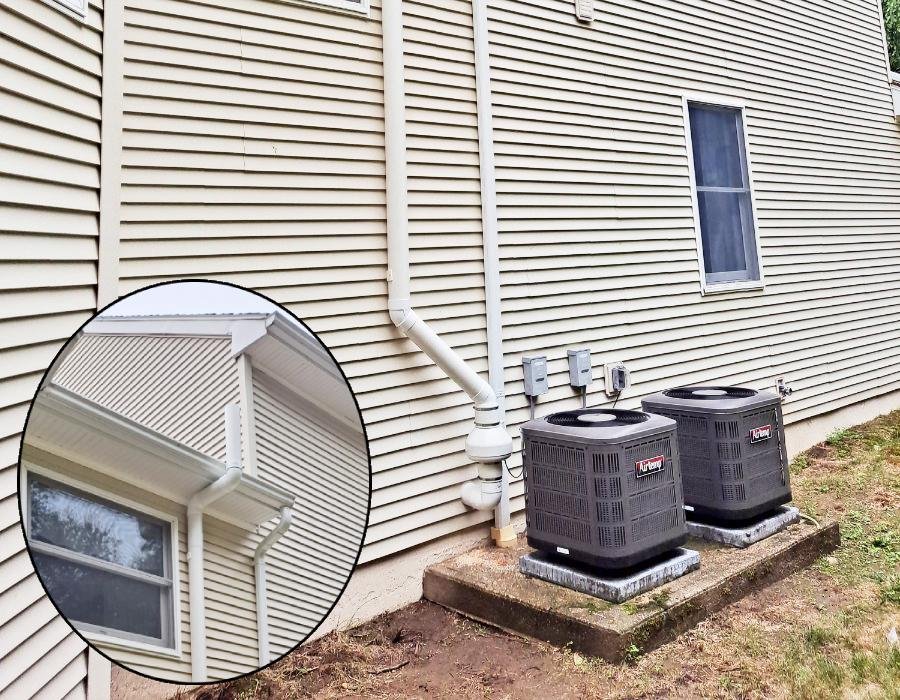When it comes to homeownership, moisture is an often-overlooked threat that can cause serious damage over time. Excess moisture in your home can lead to structural issues, mold growth, and even health problems if left untreated. A home moisture inspection is crucial to identifying potential trouble spots and ensuring your property remains safe and sound. In this post, we’ll explore the importance of moisture inspections, the key areas they focus on, and how you can protect your home from costly damage.
Why Moisture Inspections Are Important
Moisture can be a silent and sneaky culprit in causing significant damage to your home. Whether it’s from leaks, poor ventilation, or high humidity, excess moisture can affect the integrity of your property over time. Getting a home moisture inspection ensures that any issues are caught early, helping to prevent expensive repairs down the line.
Avoiding Structural Damage
One of the most severe consequences of unchecked moisture is structural damage. Water can weaken your home’s foundation, walls, and other key components. Over time, this can lead to warping, wood rot, and in extreme cases, even the collapse of certain areas of the house. By scheduling regular moisture inspections, you can catch these problems before they spiral out of control.
Foundation Issues
Moisture can seep into the foundation of your home, causing cracks and weakening its structural integrity. During a home moisture inspection, inspectors will look for signs of water infiltration in your basement or crawlspace, which are common areas for moisture buildup. Addressing foundation issues early can save thousands of dollars in repairs.
Wood Rot and Warping
Excess moisture can also cause wood, commonly found in the framing and support beams of your home, to rot or warp. This damage weakens the structural framework of the house, leading to potential safety hazards. If wood rot is caught early, the affected areas can be replaced or repaired before the problem worsens.
Preventing Mold Growth
Moist environments are the perfect breeding ground for mold. Mold growth can cause various health issues, including respiratory problems, allergies, and infections. A home moisture inspection can help detect areas where mold might be forming and eliminate the sources of moisture that fuel its growth.
Identifying Problem Areas
Bathrooms, kitchens, basements, and attics are all prone to moisture buildup due to poor ventilation and exposure to water. Inspectors will check these areas for mold or damp spots. If any signs of mold are found, they’ll recommend steps to remove it and prevent it from returning.
Health Risks
Mold, especially black mold, can release spores into the air, which can aggravate respiratory conditions such as asthma. Even in healthy individuals, prolonged exposure to mold can lead to symptoms like coughing, sneezing, and irritated eyes. Conducting a home moisture inspection helps safeguard the air quality in your home and the well-being of its occupants.
Key Areas of Focus During a Moisture Inspection
When you schedule a home moisture inspection, several key areas of your home will be thoroughly examined. Inspectors use specialized tools and techniques to detect moisture levels, even in areas that are not immediately visible. Let’s look at some of the most common places where moisture issues are found.
Attics and Roofs
Your attic and roof are the first lines of defense against weather conditions like rain, snow, and humidity. However, these areas can also be prone to leaks and moisture buildup if they are not well-maintained.
Roof Leaks
A small leak in your roof can allow water to enter your attic, leading to moisture problems. Over time, these leaks can damage insulation and promote mold growth. During the inspection, professionals will check for signs of water stains or soft spots on the ceiling, which indicate leaks.
Poor Ventilation in Attics
Attics need proper ventilation to prevent moisture from getting trapped. If your attic lacks airflow, it can cause condensation to build up, leading to mold growth and structural damage. Inspectors will assess the ventilation system to ensure it’s working correctly.
Basements and Crawlspaces
Basements and crawlspaces are notorious for moisture problems because they are often in direct contact with soil, which retains water. Inspectors will pay close attention to these areas as they can easily become breeding grounds for mold and mildew.
Water Seepage
Water can seep into your basement through cracks in the foundation or poor drainage systems. During the inspection, professionals will look for signs of water seepage, such as damp walls, musty odors, or visible mold growth. They may also use moisture meters to detect hidden water behind walls or under floors.
Crawlspace Humidity
Crawlspaces are often forgotten when it comes to home maintenance, but they can harbor moisture that eventually leads to structural damage. Inspectors will check the humidity levels and look for signs of mold or water damage in this area.
Plumbing Systems
Leaks in your plumbing system are another common source of moisture. A home moisture inspection will involve checking all visible plumbing components for signs of leaks, corrosion, or moisture buildup.
Leaking Pipes
Even a small leak in a pipe can cause major issues if left unchecked. Inspectors will look for visible leaks around sinks, toilets, and showers, as well as signs of water damage in areas like walls, ceilings, or under appliances.
Poorly Installed Fixtures
Sometimes, moisture problems are caused by poorly installed plumbing fixtures, such as toilets or sinks. Improper seals or loose connections can lead to slow leaks that cause moisture to accumulate over time. Identifying these issues during an inspection can prevent water damage from escalating.
How to Prevent Moisture Issues in Your Home
While a home moisture inspection is an essential step in maintaining your property, there are also preventative measures you can take to minimize the risk of moisture-related damage. Proactive steps can help you avoid costly repairs and keep your home in good condition.
Improve Ventilation
Proper ventilation is key to controlling moisture levels in your home. Be sure to use exhaust fans in bathrooms and kitchens, and keep windows open when possible to allow fresh air to circulate. Installing a dehumidifier in moisture-prone areas can also help reduce humidity levels.
Maintain Your HVAC System
Your heating and cooling system plays a significant role in maintaining the air quality in your home. Be sure to have your HVAC system serviced regularly to ensure it’s working efficiently and not contributing to excess moisture. Changing air filters and cleaning ducts can also help.
Regular Roof and Gutter Maintenance
Your roof and gutters are crucial for directing water away from your home. Regularly inspect your roof for any signs of damage, such as missing shingles or leaks. Clean your gutters and downspouts to ensure they are not clogged, which can lead to water pooling around the foundation.
Waterproofing
In areas like basements or crawlspaces, waterproofing measures such as sealants, sump pumps, or drainage systems can help prevent moisture from entering. Consider consulting a professional to install these preventative measures if your home is particularly prone to moisture problems.
Conclusion
A home moisture inspection is a critical part of home maintenance that can save you from costly repairs and health issues. Whether you’re concerned about structural damage, mold growth, or hidden leaks, having a professional inspect your home can give you peace of mind. By understanding the common areas where moisture problems occur and taking proactive steps to prevent them, you can protect your home and maintain a safe, healthy living environment for you and your family.



More Stories
PVD-Coated vs. Traditional Furniture: Who win?
PCD Pharma Franchise Company in Baddi: Oasis Bio Bloom
Brass Hose Fittings: Perfect for Any Industry